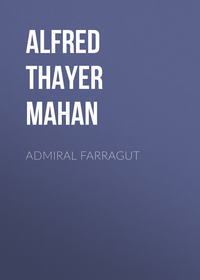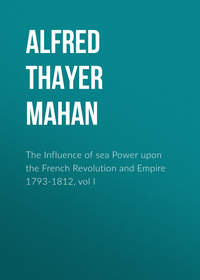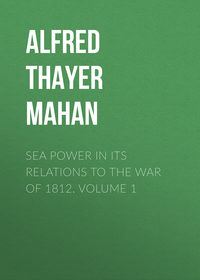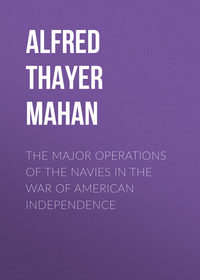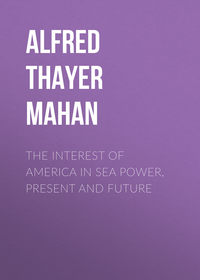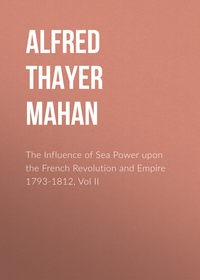 полная версия
полная версияStory of the War in South Africa, 1899-1900
Another interesting and far from improbable story was current at the time, that Joubert's retirement was due to peremptory orders from Pretoria, elicited by the progress of Methuen, the operations around Naauwport, and the increase of British force in that central region which French's movements, and those of Gatacre before Stormberg, seemed to indicate. This report is mentioned by two correspondents then at Estcourt,23 as based upon despatches captured on Boer couriers on November 25, directing Joubert to return at once to Ladysmith, and even to prepare for moving homeward. An official synopsis of the papers,24 then given to the press by the military authorities, does not fully establish the truth of the rumour, but it does give fair ground to infer that such an influence was exerted upon the counsels of Pretoria by the operations in Cape Colony; notably by the battle of Belmont, November 24, and the consequent demoralisation among the Free State burghers.
Whatever foundation of truth it may have, the incident irresistibly suggests, though it does not certainly demonstrate, the advantage of adhering to the original plan of advance by the Free State line. It has been stated that, "On all sides in Germany the opinion is expressed that Kimberley, and even Ladysmith, ought to have been erased as primary factors in the calculations of those responsible for the plan of operations. A strong British army advancing towards Bloemfontein, and turning neither to the left nor to the right, would have attracted the attention of all the available Boer forces, and would indirectly, but none the less speedily, have relieved the pressure on Ladysmith and Kimberley.... War is a hard trade, and must be waged independently of minor considerations and of many human sympathies."25 Would it not be juster to say, war must be waged in the spirit of fortitude, that endures the strain of even a very great risk, incurred by persisting in a course of action demonstrably correct?
Uttered in the week following Magersfontein and Colenso, the opinions just quoted are certainly open to the charge of being wise after the event; nevertheless, it is indisputable that they express a fundamental military truth. A really strong military conception would have been to concentrate for an advance, such as here suggested, notifying Sir George White that he could not expect direct relief, but must plan for a resistance protracted to the farthest, in order that upon the enemy might be thrown the dilemma of dividing his forces, thus facilitating the advance of the British central column, or else, in order to oppose this, to drop the eagerly-coveted prize at Ladysmith. Divided as the total British force already was by the isolation of the latter, the great resolve would have been, "Let it fall, if it ultimately must, if only by endurance it prolongs to the latest moment the dissemination of the enemy's armies." One is forcibly reminded of the charge of the Archduke Charles to his subordinate at the critical moment of 1796, which Jomini singles out for conspicuous eulogium: "It matters not if Moreau gets to Vienna, provided you keep him occupied till I am done with Jourdan." Reasonings like these are strictly general in their bearing, liable to refutation by the special circumstances controlling a particular action; and it may perfectly well be that considerations of urgency, amounting even to impossibility, make them inapplicable to the case before us. Nevertheless, it can scarcely fail that, till such special considerations are known, and their validity admitted, it is to this point that military scrutiny and inquiry will be irresistibly drawn.
Whatever the cause of Joubert's retirement, the fact was beyond doubt on the evening of November 25, and on the 26th Hildyard had advanced a detachment twelve miles, to Frere, hoping thence to act upon the enemy's line of retreat. Herein he was disappointed, but with this began the general advance of the British forces in Natal, which a fortnight later brought the adversaries confronting one another on the opposite banks of the Tugela. During this period White also was not idle. Two well-planned and energetic night attacks were made upon the enemy's siege batteries—on the 8th of December at Gun Hill, a kopje pertaining to Lombard's Kop, and on the 10th at Surprise Hill, north of the town, towards Nicholson's Nek. The former, executed chiefly by Natal colonial forces, resulted in destroying a 6-inch gun and a 4.7-inch howitzer. The second, by Imperial troops, destroyed another howitzer of the same size. Like the sorties of Kekewich from Kimberley, these, by compelling the enemy's attention to the place, contributed to further the movements of Buller, between whom and the garrison communication, hitherto dependent chiefly upon runners, had now been opened by heliograph and electric-light signals.
Frere had now become the British point of assembly. On the 8th of December there were there concentrated four infantry brigades, designated numerically as the 2nd, 4th, 5th and 6th, as well as the cavalry and artillery, which a week later took part in the battle of Colenso. The Boers on their side had taken advantage of the interior position they held, between the relieving column and the garrison, and of the fact that the latter could scarcely attempt to break out to the north, to withdraw their forces in great measure from the latter quarter, disposing them between Ladysmith and the Tugela in such wise that they might most easily be concentrated upon the centre, should the British attack be made there, as it first was, or upon either flank should a turning manœuvre be attempted. Their arrangements for such action appear to have been sagaciously made, as were also the preparations for contesting the passage of the river at Colenso.
On December 12 the final British movement began by the advance to Chieveley of the 6th Brigade, styled also the Fusilier Brigade, under Major-General Barton, with 1,000 colonial cavalry, three field batteries—eighteen pieces—and a number of naval guns, of which two were of 4.7-inches calibre, and fourteen were long-range 12-pounders. These were drawn by oxen, even when going into action; the two heavier guns requiring each fourteen yoke. These batteries were manned by 254 seamen, under the command of Captain Jones, of the cruiser "Forte." The detachment thus composed settled down a little in advance of Chieveley, just east of the railroad line, about three miles from Colenso and four from the kopjes on the far side of the Tugela overlooking the railroad bridge, upon the nearest of which stands Fort Wylie. The exact range to the latter, as determined the next day, was 7,200 yards.26
The following morning, Wednesday, December 13, at 7 A.M., the naval guns began a heavy bombardment upon the kopjes last mentioned, which lie nearly due north of Colenso, and upon which Sir Redvers Buller intended to make his main attack. The firing was maintained for six hours, and did in places considerable damage to such works as could be discerned; the 4.7-inch guns using lyddite shells, the bursting effect of which is extremely violent. Despite the severity of the test to which they were thus subjected, the Boers with admirable self-control refrained from any reply, and so preserved in great part the secret of their dispositions from detection by the enemy.
Next day, Thursday the 14th, the remaining British force marched out of Frere camp at 4.30 A.M. for Chieveley. The extreme heat of the days, summer being then well begun, combine with the usual advantages of timely starting to determine early movements in South Africa. The last comers pitched camp west of the rail, and about a mile nearer the Tugela than the 6th Brigade. The naval guns also moved forward three-quarters of a mile, and resumed the bombardment. The Boers again making no reply, the disappointment of their opponents at failing to uncover the position of their guns began to yield to an impression that these had been withdrawn, and even that possibly the passage would not be contested.
The total British armament now gathered on the south side of the Tugela has been variously stated at from 20,000 to 23,000 of all arms. The smaller figure seems the more probable. As regards the number of their opponents, there is no certain information. Nothing is known, however, to reduce the estimate previously given—30,000. Allowing for the necessity of holding in check the garrison at Ladysmith, the Boers could very well meet Buller in force numerically equal, without taking account of the passive advantages of a defensive position unusually strong.
That night were distributed the British orders for forcing the passage of the Tugela. They were issued by Sir Francis Clery, as commanding the South Natal Field Forces; but Sir Redvers Buller, by the language of his subsequent report, has left no doubt that the plan embodied his own ideas, as Commander-in-Chief in South Africa generally, but present on this scene. This report is the guide in the following account, the narratives of others having been by the writer used to supplement or, where necessary, to elucidate.
The general line of the Tugela, for a half-dozen miles above Colenso, is nearly due east, but its course is extremely winding. In this section two or three bends of nearly a mile in bulge occur, one of which had quite an influence in the action. The town itself lies in a bight of this kind, just west of the railroad, which crosses the river by a bridge, at that time destroyed. Immediately above it, however, an iron road-bridge still remained. The latter is the centre of a semicircle of hills, which surround it to the northward, their crests being on an average some 1,400 feet high and distant four and a half miles. The bridge was also the centre of battle, as planned by the British. Near it, on the north side, are "four small, lozenge-shaped, steep-sided, hog-backed hills," the one nearest the water, on which Fort Wylie stands, being the lowest, the others rising in succession behind. They were all "strongly entrenched, with well-built, rough stone walls along every crest that offered, there being in some cases three tiers." It was upon these that Buller designed to make his principal effort. "It was a very awkward position to attack," he says, "but I thought that if I could effect a lodgment under cover of Fort Wylie the other hills would to a great extent mask each other, and shell-fire and want of water would clear them out in time."
The report of the Commander-in-Chief, dealing almost exclusively with the course of events as they happened, does not particularly describe the remaining features of the field. These must be supplied from other sources. Above—west of—Fort Wylie, on the north side, the hills recede somewhat from the river and rise to one of the crests mentioned by Buller, known as Grobler's Kloof. This also was heavily fortified, commanding, it is said, Fort Wylie and the neighbouring hills. If this be so, success at the latter, had it been achieved, would quickly have elicited proof of the fact. Under Grobler's Kloof, some two or three miles up the river, was a drift or ford, over which the plan of attack proposed to pass the 5th or Irish Brigade, commanded by Major-General Hart, forming the left flank of the British line. This done, the brigade would move down stream to reinforce the main attack on the Fort Wylie kopjes.
Below Fort Wylie the river continued south-easterly for something less than a mile. Then with a bold sweep it curves north, and round west, to a point half a mile north-east of the fort, when it again flows due north for a couple of miles. From this formation results a tongue of land, embraced in the curve, projecting to the south-east, and much resembling a bastion, to which the subsequent northern stretch serves as a curtain. In general effect, however, the river may be broadly said to make below Wylie a sharp turn to the north, running that way for two or three miles, after which it resumes its general easterly course towards the sea. The point where it thus resumes its direction is well to the north—rear—of the line of Boer entrenchments, between Grobler's and Wylie, so that, if their positions were prolonged on that same line, they would be separated by the river. If, on the other hand, instead of so continuing, the entrenched works were made to follow the river course north, keeping always on the same side of the Tugela, the main Boer positions, confronting the bridge, would be open to enfilading fire from the eastern hills on the opposite side below the bend.
Such conditions would seem to make this eastern part of the Boers' position—their left flank—the weakest. The outcome of the campaign tends to confirm this conclusion, which the author has been interested to find also in a letter, not only composed, but published, before the abortive attempt to turn the west flank at Spion Kop. "To the east of Fort Wylie," wrote a correspondent of the London Times on December 21, "the Tugela bends sharply northward, and here the left flank of the Boer position is on the south sides of the river, on a solitary hill called Hlangwane. This is doubtless the weakest spot in the Boer position, for if an enemy could take it by storm or otherwise, he could render the kopjes north of Colenso untenable."27 This shows that the Boers preferred to have their lines divided by a river fordable only in places, and at times impassable through floods, rather than leave their flank uncovered to artillery, a decision probably correct. As shown by the plans, Hlangwane, as an eminence, stood by itself; a mile and a half to its east and rear was another height named Monte Cristo, and again to the westward a range called Inhlawe Mountain.
Of the features mentioned, the Bridle Drift on the west, the iron road-bridge in the centre, and Hlangwane Hill on the east, are the principal points to remember. On the British side of the river, a plain sloped gradually down to the southern bank from a distance of two or three miles. It was divided north and south by a slight swell in the ground, flat-topped, of height just sufficient to conceal men on one side of it from those on the other. On the eastern edge of this rise, the railroad track ran north to the bridge. On the western side, and between 3000 and 4000 yards from Wylie, was placed the chief naval battery, the two 4.7-inch and four 12-pounders. Between these and the railroad was to advance the central column of attack, the 2nd Brigade under General Hildyard. To the left rear of this, between it and the 5th Brigade—which, as before said, was directed upon the Bridle Drift—was placed the 4th, under Major General Lyttelton, charged with the duty of reinforcing either the 2nd or the 5th, as circumstances might demand during the progress of the fight. The 6th Brigade—Major-General Barton—was to advance on the east of the railroad, in general support of Hildyard. On this part of the field the ground was flat, but intersected by several dongas. Each extreme of the line of infantry formed by the four brigades was covered as usual by a flanking force, chiefly of horse; but while that on the British left had this function only, that on the right, the mounted brigade, with one battery—six guns—was to attempt Hlangwane Hill. If successful, it was to enfilade the Wylie kopjes from that position. The remaining four batteries of field artillery were intended at the proper moment to concentrate their fire upon the Wylie kopjes, preparing the way for the crucial charge of the 2nd Brigade. For this object, two followed Lyttelton's 4th Brigade, and two the 6th; the last, under Colonel Long, being accompanied by six naval 12-pounders.
From these dispositions it appears, as is clearly stated by Buller in his report, that all the differing factors in the attack were to converge for their object, and according to their respective qualities, upon "the kopjes north of the iron bridge"—to use Clery's expression in the orders for battle. The 2nd Brigade marched upon them direct; the 5th approached their right flank by way of the Bridle Drift; the 4th and 6th reinforced, as required, each of the others; the four batteries—two on either side—brought a cross-fire upon the same objects; while the flanking force on the British right was to assist by an enfilading fire from Hlangwane. To combine several separate efforts, so that by mutual support and effect each at the critical moments contributes its due share to the one main exertion, is always difficult. Failure may ensue from lack of the nicest attention on the part of any one subordinate, or from those chances which must always be allowed for in war. The British at Colenso suffered from both causes.
Hart, on the left, having the longest road to reach the kopjes, moved first. The brigade reached the river, but missed the ford. It has been said that the enemy, by building a dam below, had raised the water to seven feet. Be that as it may, a few venturing in with musket and ammunition belts were drowned. Groping for the way, and apparently confused between the tortuous courses of the river itself and a tributary which enters near by, the mass of the troops blundered into a sharp bend curving to the northward, thus coming under a cross fire from the two enclosing banks. Here they became heavily engaged, and Buller, seeing the hopelessness of the position, recalled them. It was necessary, however, to send two of Lyttelton's battalions and two batteries to extricate them. Hart's attack therefore had failed, and his division contributed nothing further except the menace of its presence, which must retain some of the enemy to resist a possible renewal.
A yet more decisive mishap meanwhile had occurred in another part of the field. Reckoning that Hart and Hildyard were to attack in mutual support, the time had come for the latter to advance, and he had done so. The beginning of his movement was to have been covered by the six naval 12-pounders accompanying Long's two field batteries, and a position had been appointed them to that effect; it being intended apparently that the army guns should not come into action till later, when the development of Hildyard's movement would permit them to approach the enemy within their shorter range without losing the necessary support of infantry fire,—directly by the 6th brigade, specifically charged with that duty, and indirectly by the occupation which Hildyard's attack would necessarily give the Boers. Instead, however, of attending closely to the requirements of a movement where a certain exactness of touch was evidently necessary, Long's two field batteries, leaving their infantry escort behind, galloped rapidly forward on the east side of the railroad and came into action 1200 yards from Fort Wylie, and, as Buller judged, only 30028 yards from the enemy's rifle pits. The slow-moving oxen fortunately were unable to drag the heavier naval guns to the same position to share the fate that quickly befell. A very heavy fire was opened from the Boer rifle pits, and although the gunners stuck manfully to their pieces until the ammunition in the limbers was exhausted, they were compelled then to leave them on the plain, retreating for shelter to a donga. The breech-blocks, even, were not carried away; it is said because they expected to return again to action. The naval detachment, 300 yards further back, were exposed to the same fire, but received only its outer fringe. The native drivers bolted, and many of the oxen were killed or stampeded; but the seamen contrived to drag their guns out of range.
News of this mishap reached Buller as he was returning from witnessing Hart's discomfiture. Hildyard was directed to move two regiments of his advancing brigade to the right to save the pieces; but, though the order was steadily executed, it was found impossible to keep the troops out of cover under the fire of Wylie, which had been momentarily silenced by Long's impetuous attack, but had now opened again. The batteries had failed by preceding, and so losing, infantry support; the infantry in turn failed because the guns were powerless. A sudden and desperate rush with harnessed teams succeeded in withdrawing two of the twelve abandoned pieces, in performing which service the son of Lord Roberts lost his life. But a second attempt found the enemy on guard again, and out of 22 horses that started 13 were killed before half-way to the spot.
The naval 12-pounder accompanying Long having been rendered immobile for the day, and the two batteries sacrificed, Sir Redvers Buller decided that without their support it would be impossible to force the passage. He therefore directed a general withdrawal to the camp. The abandoned batteries were left in the open, where, together with the wounded men and some of the supports sent in by Hildyard, they were taken by the Boers. The British loss in missing and prisoners was 21 officers and 207 men. There were killed 135, and wounded 762. The enemy remained unshaken in his positions.
This mortifying reverse, following sharply upon the heels of Magersfontein and Stormberg, thoroughly aroused the British people, who neither at home nor on the field were prepared for it. The day after the receipt of the news, Saturday, December 16th, a Cabinet meeting was held, and the next evening it was announced that, as the campaign in Natal was likely to require the undivided attention of Sir Redvers Buller, Lord Roberts would be sent to South Africa as Commander-in-Chief, and would be accompanied by Lord Kitchener as Chief of Staff. At the same time the rest of the Army Reserve was called out, and further measures taken which carried the troops employed in South Africa to, and beyond, the large numbers already quoted as despatched by the end of the following March.
Lord Roberts sailed from England December 23rd. On the 26th, at Gibraltar, he picked up Kitchener, who had been brought there by a swift naval cruiser, and on the 10th of January, 1900, he landed at Cape Town.
CHAPTER VI
THE NATAL CAMPAIGN. BRITISH PREPARE FOR A FLANKING ATTACK UPON THE BOERS' RIGHT AT THE TUGELA. THE BOER ASSAULT ON LADYSMITH, JANUARY 6TH
After the reverse at Colenso, nearly four weeks elapsed before Sir Redvers Buller was ready to move again for the relief of Ladysmith. The interval passed in receiving reinforcements, and in accumulating a transport service which should enable the army to perform a long flanking march, for, the frontal attack upon the Boer centre having failed, and its difficulties been not only recognised but demonstrated, the purpose was now to turn their right flank by way of Springfield, some twenty miles to the north-east of Frere, crossing thence the Tugela by a ford six miles distant, known as Trichardt's Drift, and following the Acton Homes road. The army would thus pass round Spion Kop and gain the open plain north of the mountain thus named.
While this movement was in progress, but before crossing the river, a reserve supply for seventeen days was accumulated at Springfield. It may be assumed therefore that this represents the conditions which Sir Redvers Buller thought requisite to his projected operation. The necessity of depending chiefly upon the slow-moving ox-wagons, and their comparatively small capacity, made the organising of the train tedious and difficult. "To forward supply alone," wrote Buller, "took 650 ox-wagons, and as between Frere and Springfield there are three places where all the wagons had to be double-spanned, and some required three spans, some idea of the difficulties may be formed." A correspondent with the army states that the wagons "can only be depended upon to haul not more than 600 pounds each." To lessen this great inconvenience road traction-engines were employed with success. The same writer says of these that "they can easily haul twelve tons, and on a flat, dry veldt strip along at a brisk eight miles an hour. They leisurely descend into spruits—beds of streams—roll across, and wheel up stiff long climbs like flies walking up a wall. They are not quite helpless, even when the ground has been soaked by rain."29
While these preparations were making, the besieged had to resign themselves to further weary endurance. "Sir Redvers Buller," writes a correspondent within, "has sent a heliograph message bidding us wait in patience for another month until siege artillery can reach him." The bombardment was maintained by the Boers with increased but monotonous regularity, intensified from time to time as movements among Buller's troops led them to strengthen their forces upon the Tugela, with a consequent weakening of those of investment.
The firm resolve manifested by the British Government and people after the repulse at Colenso, and the enlargement at once given to the scale of the war and to the contemplated reinforcements, showed that, unless the garrison was speedily reduced, it would probably be relieved by sheer weight of numbers. In short, the opportunity for a decisive blow possibly now existed, but, if not quickly improved, would certainly pass away for ever. The motive for the assault that soon followed is not positively known; but, if the Boer information of the damage done by their shells, and of the food and ammunition supply in the town, was as accurate as it is believed to have been, they knew that neither bombardment nor hunger could reduce the place before the dreaded power of the outside enemy received full development. Ladysmith was to them like a dead weight round the neck of a swimmer struggling for life under other disadvantages. It is unnecessary to seek any further reason for the assault of January 6, by whomsoever first commanded. The words attributed to Joubert's order, "Ladysmith must be taken before Wednesday"—the faint echo, perhaps, of Wellington's "Ciudad Rodrigo must be stormed this evening"—needed only to be supplemented by the words, "or never," to express a military argument to which no valid reply could be made. As the commander of the New Orleans forts said, "There will be no to-morrow unless so and so is done at once."





